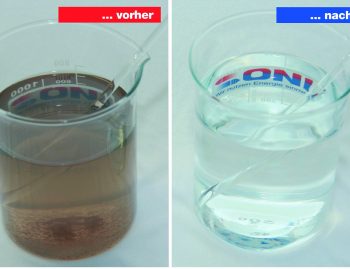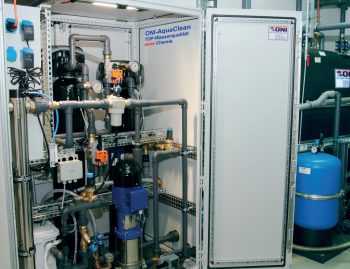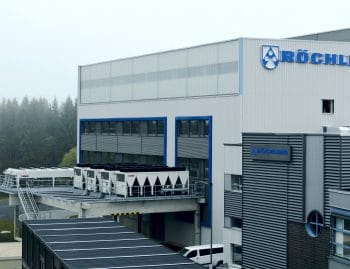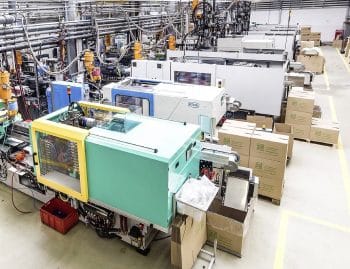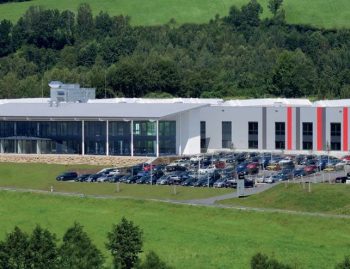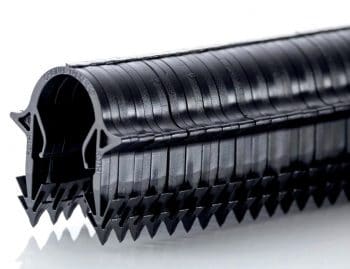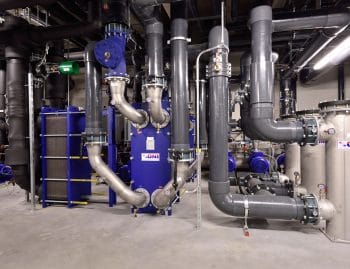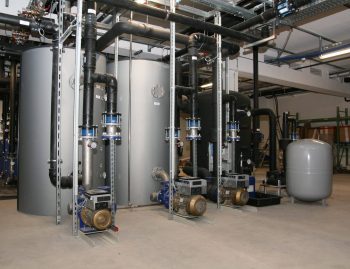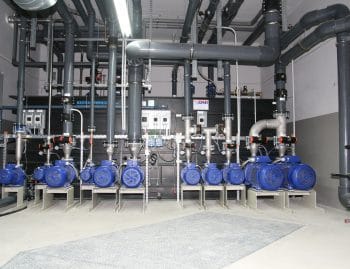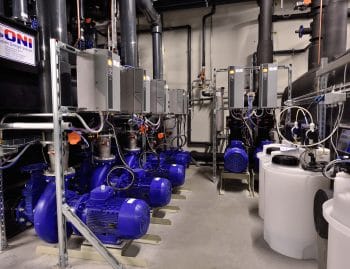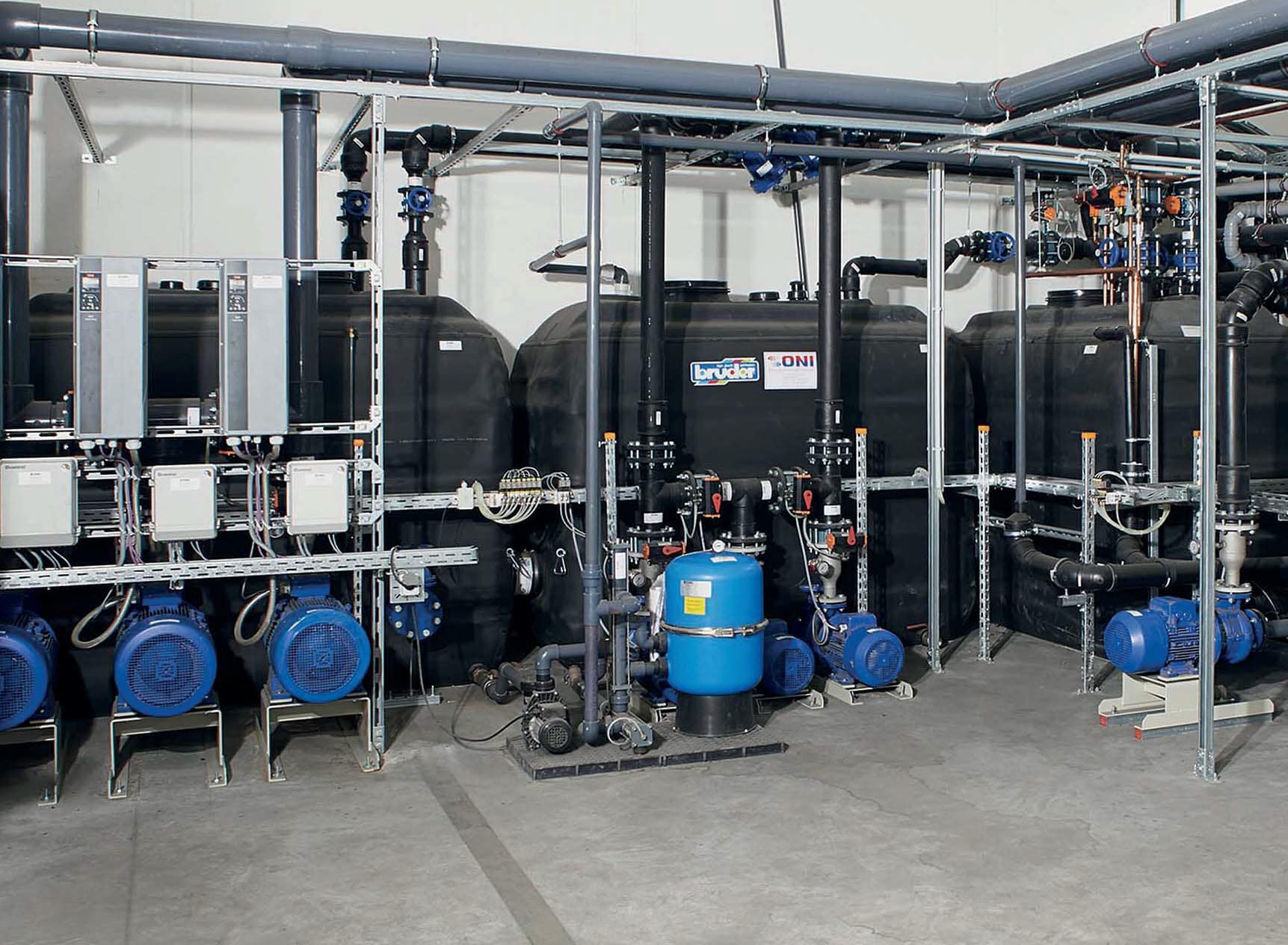
With the decision for an offensive energy saving policy, Bruder has set the course for a sustainable optimization of the energy cost situation. With all its experience and a new cooling system concept, ONI Wärmetrafo GmbH from Lindlar has made a contribution.
What makes children's eyes shine and adult men discuss enthusiastically? This question answers itself once you have experienced the high-quality plastic toys from Bruder live. Bruder Spielwaren GmbH & Co KG from Fürth is successful in more than 70 countries around the world with sophisticated, pedagogically valuable and high-quality toys. "We develop and manufacture products that are tailored to the special experience and learning needs of children. With our play equipment and toys you can be a child, live dreams and experience fun. On the other hand, they collect impressions from the adult world in a playful way, which stick as a good basis for later adulthood," is how managing partner Heinz Bruder describes the company's product philosophy.
Decisive factors for the long-term success of Bruder are a good feel for market developments, innovative strength, customer-oriented action, solid management and corporate management with entrepreneurial vision. One factor in this is the consistent implementation of an energy-saving policy that effectively counteracts rising energy costs. Currently, the cooling system technology for the strongly growing plastics processing has been expanded by the energy saving specialist ONI from Lindlar. The advantages of the new cooling system concept are its high energy efficiency and operational reliability.
Future-oriented success strategy
Started in 1926 from the smallest of beginnings, Bruder Spielwaren is today one of the most important companies in the world when it comes to high-quality and pedagogically valuable toys. For decades, it has been possible to develop toys that give children fun to play with, give them pleasure for a long time, are safe to use and at the same time promote the intellectual development of children. The result is the company's success story, which is already continuing in the third generation. The products are known around the globe and are now delivered to 70 countries around the world.
But Bruder also occupies a leading position among the major plastics processors with regard to optimized energy efficiency. For years, an offensive energy-saving policy has been pursued. With a view to the future, the company is thus meeting the rising energy prices to be expected in the future in order to improve its own competitiveness and thereby further expand its market position. At the same time, the aim is to show that the responsible use of primary energy is not only worthwhile from an economic point of view, but that it also makes a significant contribution to active environmental protection.
Energy optimisation in two circles
At Bruder in Fürth, production is divided into two areas and is started up with cooling water via two separate networks. A classic dual-circuit cooling system is used to supply the injection moulding machines. For mould cooling, a cooling water temperature of 12 °C is provided all year round and for hydraulic oil cooling, a cooling water flow temperature of 35 °C is sufficient in the newly constructed cooling circuit due to the selected heat exchanger geometry. The system design as a dual-circuit cooling system and the selected temperatures in the new network circuits ensure that extremely efficient energy-saving measures can be implemented in both areas of cooling energy generation.
An essential approach can be found in the area of cooling water supply for mould cooling. The cooling water for mould cooling and the building services area is usually generated via cooling machines. In order to make this energy-intensive form of cooling water production as economical as possible, it was decided to use particularly energy-efficient cooling machines. However, since further energy saving potentials were also to be exploited in this area, following energetically optimised chiller operation, an energy-saving circuit was planned for the transition and winter months to relieve the load on the chillers. Another area that is ideally suited for the successful use of energy-saving measures is machine cooling. Here, the energy used in the transition and winter months can be used several times by using heat recovery.
Cooling machine in minimum operation
Cooling water with a flow temperature of approx. 12 °C is required all year round for cooling the injection moulds, with the highest possible security of supply. Today, electrically driven chillers are still used in many cases throughout the year to generate the cooling water, which leads to considerable cost burdens due to high power consumption. In addition, the operating costs for a cooling system exceed the acquisition costs of the system many times over over the service life. If even a moderate price increase for primary energy sources is taken into account, the share of energy costs in the total costs becomes a significant and serious factor. In order to effectively counteract this problem, the project managers from Bruder specified from the outset the demand for particularly energy-efficient cooling water generation. For this reason, the decision was made to opt for a system solution that is inherently particularly energy-efficient and also largely dispenses with the energy-intensive use of refrigeration technology throughout the year.
For this reason, particularly energy-efficient chillers were provided to generate the cooling water for the moulds of the injection moulding machines in Fürth. This design of the machines achieves a high degree of efficiency and thus ensures very low energy consumption, even with permanent full load operation. Although the cooling machine operation has already been optimised from an energy point of view by this design variant, the remaining energy expenditure was to be reduced to an economically justifiable level by additional measures. The aim was to ensure that the system technology used ensured that chiller operation was largely limited to the summer months and a short period during the transition period. The cooling machine system for the tool circle was equipped with a so-called ONI winter relief. This system technology takes over the cooling water supply of the mould cooling circuit instead of the chillers in the transition and winter time. With this technology, the ambient air available free of charge is used as cooling medium. As soon as the required cooling water temperature can be provided with the outside air, the cooling machines are simply switched off and no longer consume electricity. The electrical energy required for winter relief is reduced to a value of approx. 2-3% of a refrigerating machine. This means that the use of chillers is dispensed with for more than 65% of the operating time. This saves a lot of energy and money.
The associated energy management is performed by a dynamic control system developed by ONI with energy-optimizing system software. This ensures at all times that the refrigeration system is operated with the lowest possible energy consumption. In addition, it ensures that the winter relief remains active for as long as possible because every hour the chiller remains switched off is worth cash for the operator.
Heating with the cooling water
Plastics processing is inherently extremely energy-intensive. In this respect, it is understandable and comprehensible if the plastics processor wants to reduce his energy costs as much as possible. Ideally, this can always be achieved if one is able to use the energy quantities required several times at the same time. The cooling energy supply of the injection moulding machines at Bruder Spielwaren in Fürth offers this optimum approach.
Due to the heat exchanger geometry of the oil coolers in the injection moulding machines, a cooling water temperature spread of 35/40 °C could be selected for the newly constructed cooling circuit. This increased system temperature pair, compared to a normal temperature spread of 30/35 °C, offers several advantages at the same time. On the one hand, the cooling water supply of the machines will manage without peak cooling via secondary systems even at the highest summer temperatures. In addition, the cooling water return with a temperature of 40 °C supplies waste heat from the machines, which can be used directly for heating purposes via a heat recovery system. In this specific case, the waste heat with an output of around 500 kW is used for several applications at the same time. This turns waste heat, which previously had to be recooled at high cost, into valuable heating energy that replaces natural gas or heating oil. As a result, heating costs can be massively reduced. This low-temperature technology also offers a particular advantage in terms of heat distribution in the room. Heating heat emitted by conventional heating systems naturally migrates by the shortest route to the ceiling of the room or hall, where it is normally not desired. Heating heat on a low-temperature basis mixes much faster with cooler room air, so that ultimately the heating heat reaches where it is really needed.
In hardly any other area does the implementation of an energy-saving measure have such a strong effect as in the supply of cooling water. The right choice of system technology and temperature spread ensures low costs in primary cooling water generation right from the start. By using heat recovery, heating costs are massively reduced because free waste heat replaces expensive primary energy sources such as heating oil or natural gas. At the same time, heat recovery ensures that no separate recooling of the cooling water is required during waste heat recovery. At the same time, of course, the costs for recooling are eliminated. Through the use of particularly energy-efficient chillers and an attached winter relief, the electricity input for the cold water supply of the mould cooling is brought to a minimum value. All in all, the consistent implementation of the requirements defined by Bruder not only leads to a reduction in the share of energy costs to a minimum. With this energy concept planned and implemented by ONI experts, Bruder is at the same time setting an example with regard to active environmental protection. Economy and ecology therefore benefit from the use of energy-saving measures, especially in the plastics processing industry.







